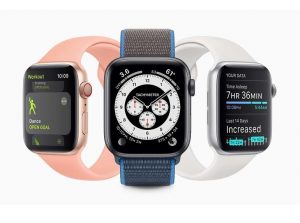Pen and paper still play a big role in data entry, despite the fact that COVID-19 has forced healthcare organizations to adapt new tech, according to a new survey.

female nurse using tablet computer in hospital
www.delightimages.com, Getty Images/iStockphoto
Nurses and other caregivers spend more time dealing with tech problems and entering data than caring for patients, according to a new survey of frontline workers. The survey found that tech problems are a huge time sink for workers who said they spend an average of five hours per week on fixing tech problems. Sixty-three percent of respondents said they had a device or system failure every week. The survey also found that 56% of a frontline worker’s time is spent accessing and updating patient records.
The report, Critical Technology for Critical Care: State of Mobility in Healthcare 2020/21, is based on interviews with 475 homecare workers, nurses, and other healthcare professionals in seven countries.
Fifty percent said that the existing technology platforms waste time that could be spent helping patients. Sixty-five said their employers need to invest in better technology for a future health crisis, even though a third also said that hospitals and other providers had introduced new technology to respond to the coronavirus pandemic.
SEE: Samsung Galaxy Unpacked 2020: Galaxy Z Fold2, Samsung Galaxy S20, and more (free PDF) (TechRepublic)
SOTI conducted the survey to understand how technology helps or hinders patient care. The research found that a fragmented or missing device management strategy is causing many of these problems, according to Shash Anand, vice president of product strategy at SOTI, which helps companies develop and implement mobility and Internet of Things (IoT) solutions.
Anand said that healthcare organizations need a mobile device management strategy that covers tablets, scanners, mobile printers, RFID tags and readers, IoT devices, and phones.
“There’s likely a lack of a management solution to manage all the different technology, so there’s a lot of inefficiencies in the way,” he said.
Anand said that he had noticed that many healthcare leaders hesitate to implement device management strategies due to concerns about the costs and implementation time.
“It’s easy to secure these devices, easy to update them, and limit what can be on them, but you have to have the right tech in place to offer that support,” he said.
Most healthcare workers–70%–have access to a mobile device or computer provided by their employer with people in Australia and Sweden most likely to have access at 78%, and people in Canada and Germany the least likely to have access. Only about half of the workers who responded to the survey said they have access to tech support.
Searching silos for patient data
Mobile devices have not made it to the bedside for most healthcare workers. Between 26% and 39% of healthcare workers use paper and manual data entry to collect and record information about patients. Less than 25% of workers use a mobile device to access general medical information, and only 18% use a device to pull up test results.
Part of the reason for this low usage level is that 70% of respondents said online systems they use on a daily basis do not run on mobile devices.
The survey also found that between 32% and 40% of workers said that patient information is not in one place and 42% said patient-information systems are not well integrated.
SOTI’s ONE Platform provides tools to manage security, personalization, deployment, asset tracking, and integration. Anand said that the company worked with healthcare organizations before the pandemic, including pharmacies, hospitals, GE Healthcare, and the Visiting Nurses Association. Since COVID-19 changed routine healthcare visits, SOTI has worked more with telemedicine and remote patient monitoring.
“Patients get a kit that includes an Android tablet, and our customers manage those tablets as part of our solution,” he said. “They can give it to the next patient when one person is done with it.”
SOTI also has helped healthcare companies digitize forms, provide temperature check kiosks, and deploy tablets at clinics.
Also see
Source of Article




